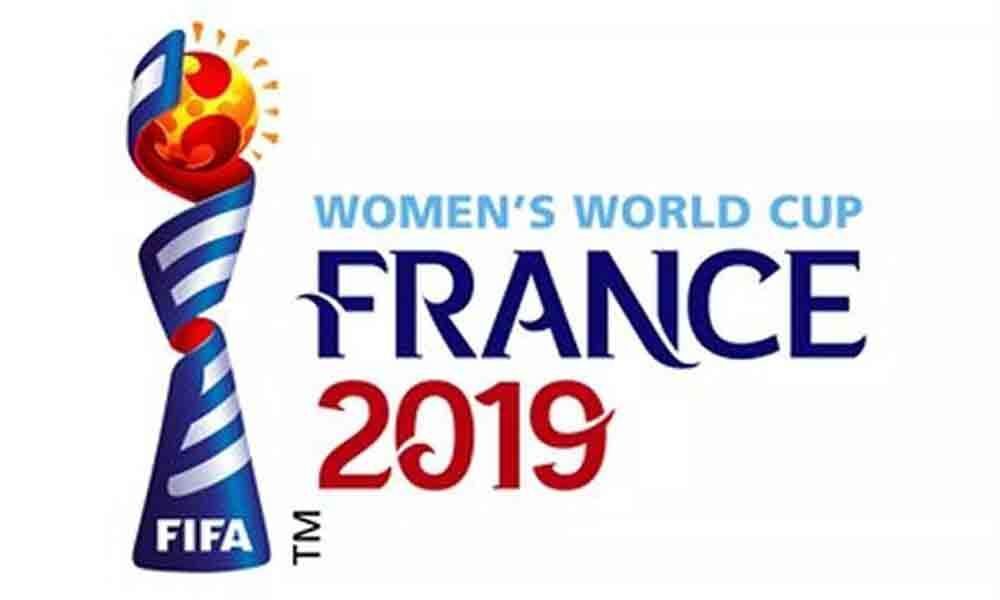Live
- Three persons admitted to hospital for diarrhea treatment
- First Star Outside Milky Way Captured: WOH G64 is 2,000 Times Larger Than the Sun
- Sikkim govt to constitute state Niti Ayog: CM Tamang
- CBI books Rajasthan narcotics inspector for Rs 3 lakh bribe
- Rajasthan bypolls: A tough contest between BJP and Congress
- Albania joins SEPA, paving way for EU integration
- Japanese government approves 250-billion USD economic package to ease price pain
- Six pharma companies to set up their units in Telangana
- The Unstable Events of a 17-Wicket Day in Perth: India vs Australia
- Dutch FM's Israel trip cancelled after Netanyahu's arrest warrant
Just In
Women footballers find the world is finally watching

Paris (AFP): During the first Women's World Cup in 1991, only fans in host nation China could watch games on television. This year's edition in France will be shown live in more than 200 countries.
FIFA, the governing body of world football, is aiming for a global audience of one billion for the 24-team women's football showcase that runs from June 7 to July 7.
The competition can help women's football emerge from the shadow of the men's game, particularly in Jamaica and South Africa, who have qualified for the first time.
In some countries, particularly where the national team excels, women's football has been more and more visible on TV with more and more women working as analysts and commentators. Audiences have been growing too.
In the United States, three-time world champions and four-times Olympic gold medallists, the biggest TV audience to view a football match was 27 million who tuned in for the 2015 World Cup final win over Japan, played in a convenient time zone in Vancouver, Canada.
In Japan, who won the 2011 World Cup and lost the 2012 London Olympics final, both against the United States, a women's match at the London Games drew a 30 per cent share of the TV audience. "There is a tradition of sport on TV that has been expressed through men's sport," said Laurent-Eric Le Lay, director of sports at France Television, one of the host broadcasters for the upcoming World Cup.
However, in France, advertising slots during women's matches shown on prime-time cost as little as half those shown during men's World Cup games. "Women's football developed later. Maybe one day the trend will be reversed," explained Le Lay.
Attention is increasing though, and that is both a product of the rising level of the women's game and a stimulus to the rising level. With standards being raised across the board, competition is improving all the time. "The sporting show is of interest, a priori, only when there is a real opposition", said Yann Imine, a professor at Paris-Sud University where he specialises in the development of women's football.
Germany is one of the leading forces in women's football, and the women's game there has really been on the rise since the country hosted the competition in 2011.
National team matches are regularly broadcast. A key moment came in 2014 when Turbine Potsdam refused a request from Eurosport to put back the kick-off of a Champions League semi-final against German rivals Wolfsburg because the broadcaster was showing motor sports.
In Brazil, the World Cup could be a pivotal moment for women's football. For the first time, Globo, the country's biggest TV channel, is showing all the national team's games.
'Lack of awareness': In the past, TV largely ignored the Brazil women's team even though Marta was world player of the year six times. When Brazil won their seventh Copa America last May, home TV showed no matches. No club competitions are televised, although the Brazilian Football Confederation last month signed a deal with Twitter to stream league matches.
Prince Ali Bin Al-Hussein of Jordan, the president of the Jordanian Football Association and of the West Asian Football Federation as well as an ardent promoter of women's football, told AFP that in order to encourage girls to play they need to see their "role models".
"One of the big problems with women's football," Ali told AFP in an interview, "is that they don't have much of a chance to see their role models because broadcasting is not there for women's football, unless it's a major tournament.
"You don't see club competitions, even in Europe. You don't have that access to it." The level of coverage of the World Cup will offer another sign that the times are changing.

© 2024 Hyderabad Media House Limited/The Hans India. All rights reserved. Powered by hocalwire.com








